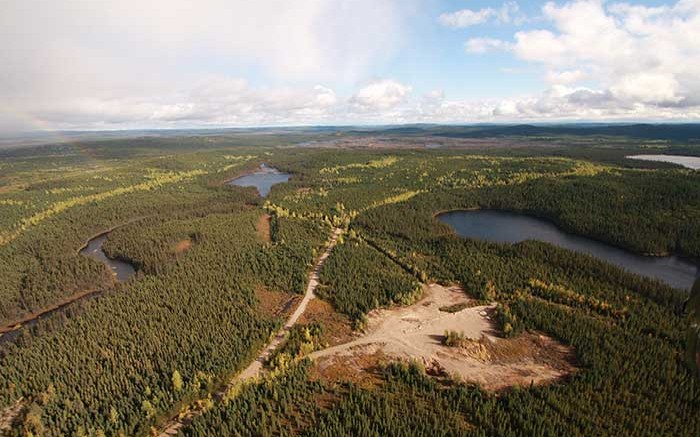Quebec’s position as the most attractive jurisdiction for mining exploration took quite a tumble in last year’s Fraser Institute survey, falling to twenty-first place. The political uncertainty in the past few years which has surrounded the debates on reforming the mining legislative framework undoubtedly accounts for this decline.
However, recent developments lead us to believe there will be a return to the predictability and stability that once made Quebec a haven for mining businesses and investors.
First, on Dec. 10, 2013, the saga of the Mining Act reform, which started four years earlier, almost to the day, and led to the introduction of four different bills in the Quebec legislature, finally ended with the passage of Bill 70. This bill is in fact a simplified version of the sweeping overhaul of the Mining Act proposed by the previous minority government, which was received with some reservation and criticism by the opposition parties. Nevertheless, Bill 70 still contains provisions that impose new constraints and restrictions on mining corporations.
Furthermore, on June 4, 2014, the newly elected majority government tabled its Budget 2014–15, which introduced measures to support natural resource development in Quebec.
Among those measures, the government announced the revival of the Plan Nord and the creation of the Société du Plan Nord — a government entity which will be responsible for coordinating the development of the area covered by the Plan Nord in accordance with the guidelines defined by the government.
Bill 11, entitled An Act respecting the Société du Plan Nord, which creates this new entity, was adopted by the legislature on Dec. 4, 2014. This new entity should be operating by April 1, 2015.
Financial assistance to implement the Plan Nord will be provided through the Plan Nord Fund (formerly known as the Northern Development Fund), which has received $63 million in funding from the government for the 2014–15 fiscal year. The fund will finance strategic infrastructure, social measures and measures to promote the development and protection of the Plan Nord territory, as well as the Société du Plan Nord. These funds are to be drawn from the tax revenues generated by the increased economic activity north of the 49th parallel.
The government also confirmed its intention to acquire equity interests, first, in companies mining mineral substances on lands in the state domain and, second, subject to some conditions, in the businesses processing those substances. It will do so by creating the Mining and Hydrocarbon Capital Fund, which will receive a $1-billion funding allocation.
The fund will be managed by Ressources Québec, a subsidiary of Investissement Québec, which already has an authorized capital of $250 million, as announced in the 2012–13 Budget.
In addition, starting April 1, 2015, the Quebec Revenue Agency will be responsible for the administrative oversight of the Mining Tax Act, which means that many employees working for the Ministry of Energy and Natural Resources will henceforth come under the aegis of the Quebec Revenue Agency.
On Nov. 26, 2014, Bill 28, entitled An Act mainly to implement certain provisions of the Budget Speech of 4 June 2014 and return to a balanced budget in 2015–2016, was introduced in the Quebec legislature. Bill 28 deals, among other things, with the change of name of the Plan Nord Fund, the creation of the Mining and Hydrocarbon Capital Fund, and the transfer of responsibilities for the Mining Tax Act to the Quebec Revenue Agency.
At press time, the special consultations on Bill 28 had been completed and debate on the adoption in principle was underway.
As for the mining royalty regime, the government announced in tabling budget 2014–15 that, in order to preserve the stability of the applicable rules, it was maintaining the “existing” mining tax regime, that is the new regime proposed by the previous government through Bill 55 (which died on the order paper when the general election was called).
As a result, the provisions of Bill 55 were incorporated almost word for word in Bill 13, which was tabled last December in Quebec’s legislature.
Bill 13 implements the government’s decision to reduce by 20% the rates of the refundable tax credit for resources under the Taxation Act (Quebec) regarding eligible expenses incurred after June 4, 2014. A similar reduction is applied to the two more deductions allowed in certain circumstances under the flow-through share regime, both of which are being decreased from 25% to 10%, in the case of flow-through shares issued after June 4, 2014.
Furthermore, Bill 13 amends the Mining Tax Act by introducing a new method for computing tax which, in addition to the mining tax on profit, provides for the implementation of a minimum mining tax based on the value of minerals extracted at the mineshaft head. It also provides for progressive tax rates ranging from 16–28% based on an operator’s profit margin, in place of the former 16% single tax rate used to determine the operator’s mining tax on profits.
It should be noted that this new reform of the Quebec mining royalty regime may not have the devastating consequences that some have predicted, since the operator will only pay the higher of the minimum mining tax and the existing mining tax on profits.
In addition, if the minimum mining tax exceeds the mining tax on profits, the excess may be carried forward to future years and deducted from the mining tax on profits in those years when the tax will be higher than the minimum mining tax. Accordingly, for some producers, the minimum mining tax is more likely to cause some cash-flow timing issues than any real increase in their overall mining tax burden.
The new progressiveness of the mining tax rates may have only a negligible or minor impact on producers’ profits for the moment with the recent significant decline in the value of commodities. It should also be kept in mind that mining taxes are fully deductible for both federal and Quebec income tax purposes.
As well, it is noteworthy that the refundable duties credit for losses at the rate of 16% remains in place. Whereas mining taxes are deductible both for federal and Quebec income tax purposes, one should not forget that this refundable credit is not taxable under either the federal or Quebec income tax legislations.
Therefore, junior mining companies and producers should take every opportunity to characterize mining expenses appropriately as either “exploration”, “pre-production development” or “post-production development” expenses in order to maximize their refundable duties credit for losses.
Although Bill 13 was introduced in December 2014, there has been no further development since then. Nonetheless, it is expected that it will be passed in the current year since the government has a majority in the legislature.
In conclusion, it is hoped that the Quebec tax authorities will see the administrative consolidation discussed above as a good opportunity to reconsider their current audit policies and practices, or that it will at least lead to a full harmonization of the interpretation of the terms, provisions and concepts found in the Mining Tax Act and the Taxation Act (Quebec).
In the meantime, mining companies have quite good chances of succeeding in legal challenges of certain positions taken by the Quebec government on some contentious mining-related tax issues, such as what const
itutes “exploration” expenses, “pre-production development” expenses and “post-production development” expenses for purposes of the aforementioned 16% refundable duties credit for losses and what constitutes “eligible expenses” for purposes of the refundable tax credit for resources under the Taxation Act (Quebec).
— Based in Montreal, Emmanuel Sala is a partner at the law firm Lavery, de Billy, L.L.P. His practice focuses on mergers, acquisitions, corporate reorganizations and the financing transactions of Canadian and foreign corporations, particularly renewable energy and natural resource companies. He is also chartered professional accountant.
Jean-Philippe Latreille is an associate at the Montreal offices of Lavery, de Billy, L.L.P. He practices tax law as a member of the firm’s Business Law Group, and advises businesses from various industry sectors as well as individuals on tax issues, particularly relating to income taxes, commodity taxes and the application of particular tax laws.
Lavery is an independent law firm that offers a full range of legal services to business. It has more than 200 lawyers in Montreal, Quebec City, Sherbrooke, Trois-Rivières and Ottawa. Visit www.lavery.ca for more information.





Be the first to comment on "Commentary – Coming soon: A predictable and stable legislative framework for mining in Quebec"